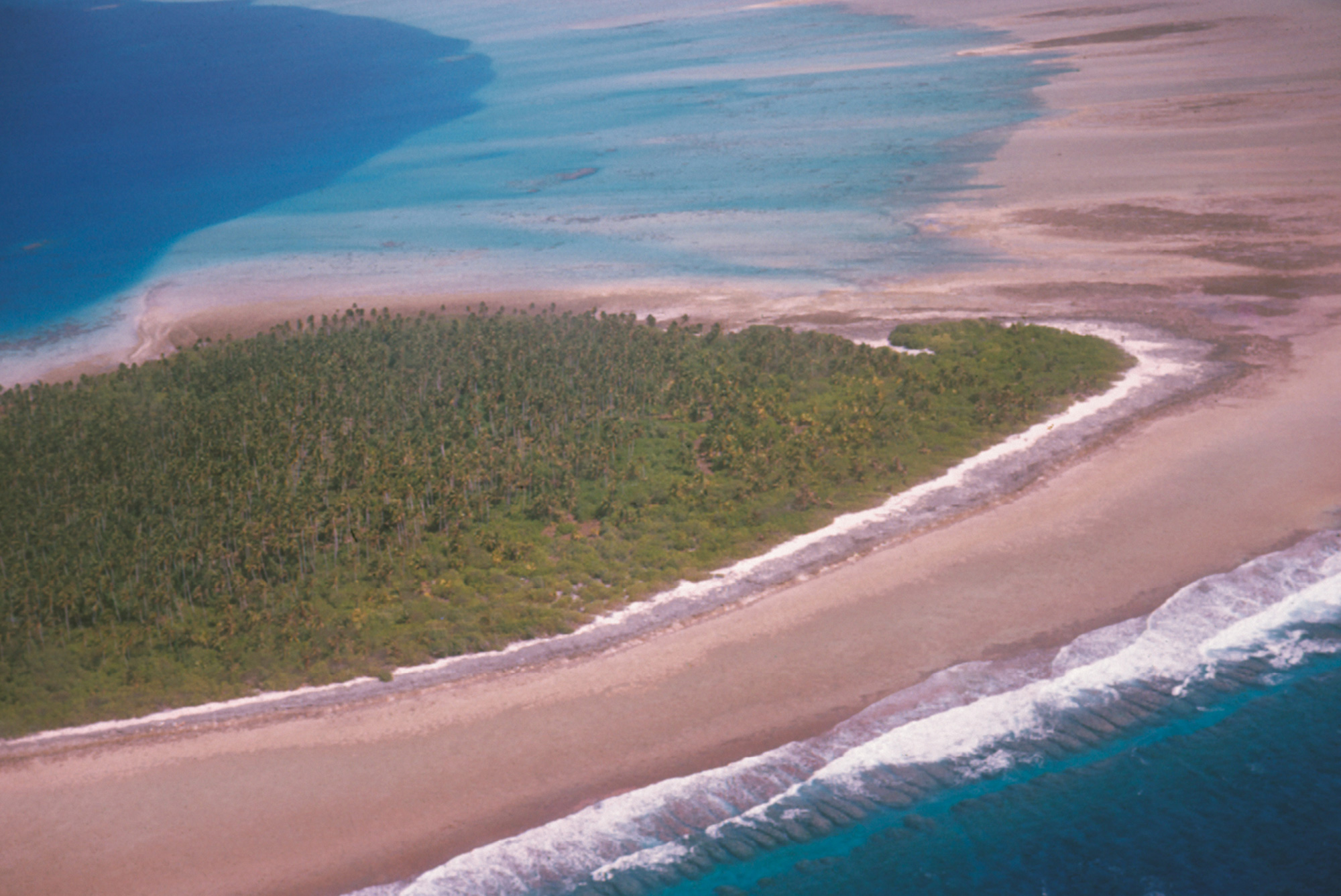Lords of the Ring
Beneath the surface of the atoll
Alistair Sponsel

Atom by atom thus the burthen grew,
Even like an infant in the womb, till Time
Deliver’d ocean of that monstrous birth,
—A coral island
—James Montgomery, “The Pelican Island” (1827)[1]
Of all the newly discovered wonders of the tropical Pacific, none seemed more far-fetched to early-modern Europeans than a peculiar form of island that barely stood above the sea. These low, ring-shaped landforms appeared to be nothing more than graceful arcs of sand wrapped around shimmering lagoons. For the French circumnavigator Louis-Antoine de Bougainville, the cluster of these low islands east of Tahiti was a landscape of contradictions. He called it l’Archipel Dangereux, not out of concern for the inhabitants of “these strips of land that a hurricane could bury at any moment beneath the water,” but because those inconspicuous shoals posed a terrific danger to any unsuspecting ship that might be skimming across the Pacific in low light or poor weather. The ring-like form of these islands was so improbable as to demand some sort of explanation, yet they seemed so vulnerable that perhaps the appropriate story would be an elegy rather than a tale of origin. Bougainville, who returned home to convince many of his countrymen that the permissive Tahitians had escaped the fall of man on their mountainous Eden, asked rhetorically of the “almost drowned” low islands, “Is this extraordinary land rising, or is it in ruins?”[2]
Might it be that these low islands possessed a vital force that could resist the eternal swell of the Great Ocean? Johann Reinhold Forster thought so. A notoriously contrarian Scots-Prussian polymath, Forster published an English translation of Bougainville’s Voyage autour du monde in 1772, complete with antagonistic annotations.[3] That same year, he set sail for the Pacific himself as the naturalist on Captain Cook’s voyage in search of a southern continent. During Cook’s great probing traverses of the Pacific, Forster saw low islands both familiar and unknown to Bougainville and became convinced that these lagoon-encircling islands had in fact arisen providentially from the depths of the ocean.
Forster claimed that whereas high islands like Tahiti had been produced by the action of “subterraneous fire” (volcanism), these so-called low islands had been produced by the labor of living creatures. He recognized that the visible substance of the low islands was “coral rock,” the fossilized remains of stony, plant-like animals that formed marvelously colorful vegetation on submerged rocks throughout the tropics. Forster’s inspired suggestion was that these islands were nothing but coral, not just at the surface but all the way down. As insignificant as they seemed from above the water, the low islands were prodigious structures. They stood as far away from any continent as it was possible to get on earth, and even within a few hundred yards of one the ocean was inevitably so deep that the longest rope aboard ship dropped without ever reaching the bottom. Yet these animated islands could never project themselves above the top of the waves; as Forster said, they were “a production of the sea, or rather its inhabitants.” And they owed their ring-like shape to nothing less than the collective will of countless tiny beings. “The animalcules forming these reefs,” he explained, “want to shelter their habitation from the impetuosity of the winds, and the power and rage of the ocean. By instinct, [they] endeavour to stretch only a ledge, within which is a lagoon, which is certainly entirely screened against the power of both [the ocean and the wind].”[4]